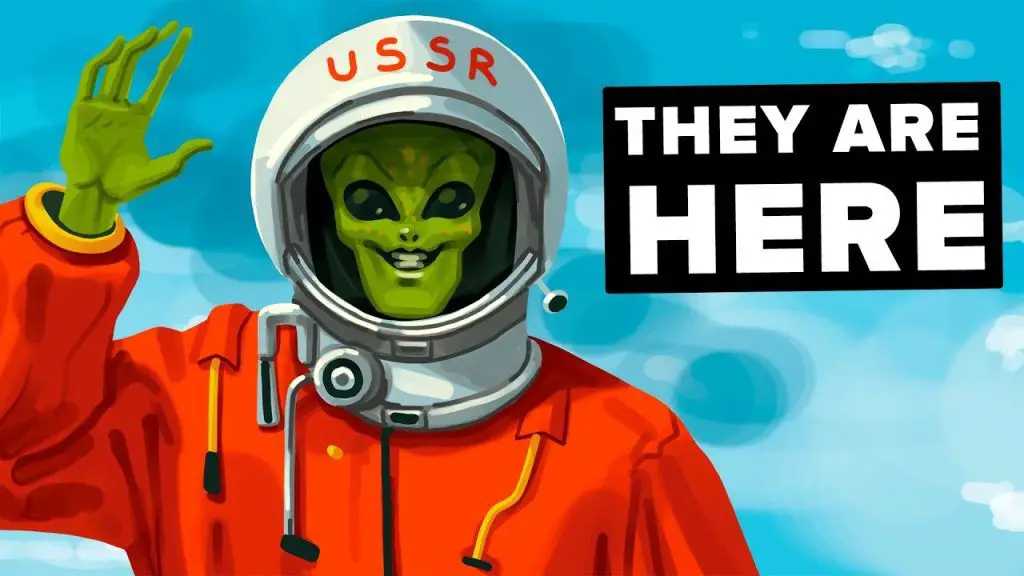
In the labyrinth of Cold War espionage, a veil of secrecy shrouded the unexplained aerial phenomena that played out in the skies above the Soviet Union. While the arms race and political tensions between East and West dominated global headlines, an equally compelling mystery was unfolding in the stratosphere. The stories of strange, unidentified flying objects (UFOs) began trickling into the public sphere, gaining credibility through the testimonies of seasoned pilots, military officials, and civilians.
The Soviet Union’s clandestine relationship with UFOs dates back to the height of the Cold War. The infamous “Baku Incident” in 1967 remains one of the most chilling accounts, where two Soviet fighter jets were tasked to investigate an unidentified craft moving at a colossal speed over Baku, the capital of then Soviet Azerbaijan. As the jets tried to engage, the unknown object reportedly shone a bright beam, causing a blinding effect in the cockpit. After returning to base, one pilot’s health rapidly deteriorated, while the other died within a few months from cancer, purportedly a direct result of the encounter.
Despite the Soviet Union’s profound secrecy, tales of such interactions with otherworldly crafts continued to emerge. Outside the city of Omsk, hundreds of eyewitnesses, including Major V. Loginov, reported a gleaming sphere, larger than the full moon, casting luminous beams of light over a civilian airport. In another incident, a UFO hovering above a nuclear facility in Usovoin, Ukraine, allegedly activated the launch panels of stored nuclear weapons, raising the specter of an inadvertent nuclear war.
While it’s true that some UFO sightings could be attributed to secretive American aircraft or misinterpretations of natural or man-made phenomena, a significant percentage of sightings couldn’t be dismissed easily. At the time, estimates suggested about 5% of these sightings were unexplainable, mirroring the findings of American investigations.
As the frequency of these sightings escalated during the 1970s and 1980s, a conference of 100 Soviet scientists from various disciplines convened to scrutinize the UFO phenomenon. A startling result was a consensus that the UFO sightings were not just figments of mass imagination but demanded dedicated scientific examination. Thus, the “Network,” a top-secret, government-backed investigation to understand the UFO enigma, was established.
Video: Soviet Union Declassified UFO Encounters Revealed
This collaboration between the Soviet Union’s elite scientific minds and the Defense Ministry analyzed thousands of UFO reports. While they debunked the majority, around 300 sightings remained inexplicable, similar to the results of the U.S. Air Force’s Project Blue Book effort.
One of the most notorious UFO sightings, dubbed the “Petrozavodsk phenomenon,” occurred in 1977 when residents of Petrozavodsk reported a bright light casting beams onto the city. The object was described as a dazzling jellyfish, morphing into a radiant semicircle before soaring away. However, some researchers suggest that this was a case of mistaken identity as a nearby secret cosmodrome had launched an object minutes before the sighting.
Despite these potential misidentifications, it’s essential to note the striking parallels between UFO sightings in the Soviet Union and the United States. This symmetry, independent of geographical boundaries and cultural differences, points to the possibility that these events might not just be earthly anomalies but could represent interactions with unknown entities, natural phenomena, or advanced technology.
The Soviet Union’s UFO legacy continues to intrigue us, casting long shadows into the present day. As the world grapples with the ongoing mysteries of unidentified aerial phenomena (UAPs), understanding these historical episodes may offer invaluable insights into the enigma that has captivated mankind’s imagination for generations.


Leave a Reply